C++回顾(十二)—— 运算符重载
迪丽瓦拉
2024-05-30 16:45:47
0次
12.1 概念
12.1.1 什么是运算符重载
就是赋予运算符新的意义,比如 << 既可以当作左移运算符,又可以当初输出运算符。
12.1.2 运算符重载入门基础推演
- 1为什么会用运算符重载机制
用复数类举例:Complex c3 = c1 + c2;
原因 Complex是用户自定义类型,编译器根本不知道如何进行加减,编译器给提供了一种机制,让用户自己去完成,自定义类型的加减操作,这个机制就是运算符重载机制 - 2 运算符重载的本质是一个函数
注意:重载可以发生在类的外边,也可以作为类的的成员函数。
- (1)在类外边重载
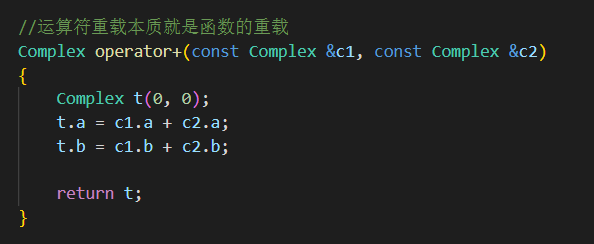
此时记得将该函数变成友元函数,否则由于成员变量权限设置,可以无法在类外访问。

该运算符重载后的应用:

- 在类内作为成员函数重载
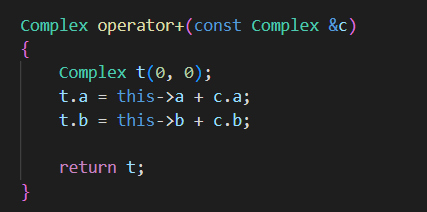
运用:

完整示例代码:
#include using namespace std;class Complex
{//friend Complex operator+(const Complex &c1, const Complex &c2);
private:int a; //实部int b; //虚部
public:Complex(int _a, int _b){this->a = _a;this->b = _b;}void print(){cout << a << " + " << b << "i" << endl;}Complex operator+(const Complex &c){Complex t(0, 0);t.a = this->a + c.a;t.b = this->b + c.b;return t;}
};//运算符重载本质就是函数的重载
/*Complex operator+(const Complex &c1, const Complex &c2)
{Complex t(0, 0);t.a = c1.a + c2.a;t.b = c1.b + c2.b;return t;
}*/int main()
{Complex c1(1, 2);Complex c2(2, 3);c1.print();//c1 + c2;Complex t(0, 0);//t = operator+(c1, c2);t = c1 + c2; //编译器会转换成 t = c1.operator+(c2)t.print();return 0;
}
运行结果:

12.2 运算符重载的限制

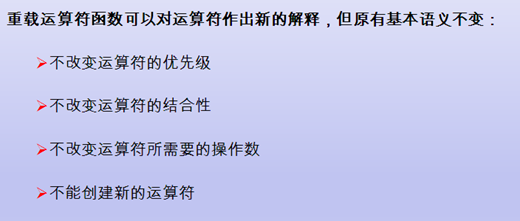
12.3 运算符重载的基础
12.3.1 运算符重载的两种方法(成员函数 或 友元函数)
(1)二元运算符
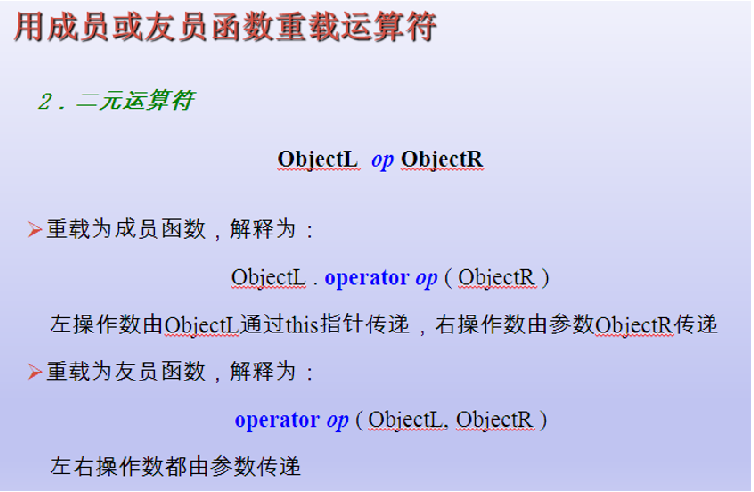
(2)一元运算符
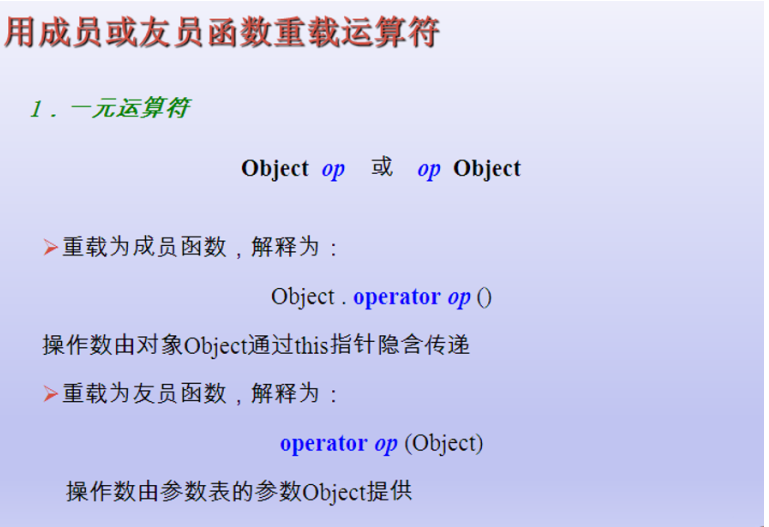
(3)前置和后置运算符总结
要明白前置++ 和 后置++ 的区别

++ 运算符的重载:
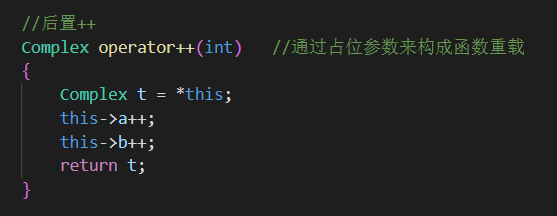
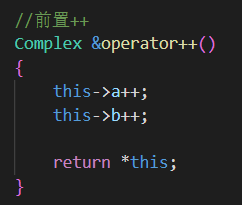
示例代码:
#include using namespace std;class Complex
{friend ostream &operator<<(ostream &out, const Complex &c);
private:int a; //实部int b; //虚部
public:Complex(int _a, int _b){this->a = _a;this->b = _b;}//后置++Complex operator++(int) //通过占位参数来构成函数重载{Complex t = *this;this->a++;this->b++;return t;}//前置++Complex &operator++(){this->a++;this->b++;return *this;}
};ostream &operator<<(ostream &out, const Complex &c)
{out << c.a << " + " << c.b << "i";return out;
}int main()
{Complex c1(1, 2);cout << c1++ << endl;cout << ++c1 << endl;return 0;
}
运行结果:

12.3.2 定义运算符重载函数名步骤
全局函数、类成员函数方法实现运算符重载步骤
1)要承认操作符重载是一个函数,写出函数名称operator+ ()
2)根据操作数,写出函数参数
3)根据业务,完善函数返回值(看函数是返回引用还是指针 元素),及实现函数业务
12.3.3 友元函数实现操作符重载应用场景
(1)友元函数和成员函数选择方法
- 当无法修改左操作数的类时,使用全局函数进行重载
- =, [], ()和->操作符只能通过成员函数进行重载
(2)用友元函数重载<< >>运算符
- istream 和 ostream 是 C++ 的预定义流类
- cin 是 istream 的对象,cout 是 ostream 的对象
- 运算符 << 由ostream 重载为插入操作,用于输出基本类型数据
- 运算符 >> 由 istream 重载为提取操作,用于输入基本类型数据
- 用友员函数重载 << 和 >> ,输出和输入用户自定义的数据类型
示例代码:
#include using namespace std;class Complex
{friend ostream &operator<<(ostream &out, const Complex &c);
private:int a; //实部int b; //虚部
public:Complex(int _a, int _b){this->a = _a;this->b = _b;}void print(){cout << a << " + " << b << "i" << endl;}/*ostream &operator<<(ostream &out) //如果左操作数不能修改,则不能重载成成员函数{out << this->a << " + " << b << "i";return out;}*/
};ostream &operator<<(ostream &out, const Complex &c)
{out << c.a << " + " << c.b << "i";return out;
}int main()
{Complex c1(1, 2);c1.print();cout << c1 << endl; //operator<<(operator<<(cout, c1), endl); 等价于 cout.operator<<(c1)return 0;
}
运行结果:

上一篇:MySQL知识点总结(2)
相关内容
热门资讯
Linux-scheduler...
四、调度域 SDTL结构 linux内核使用SDTL结构体来组织CPU的层次关系 struct sc...
Retinanet网络与foc...
参考代码:https://github.com/yhenon/pytorch-reti...